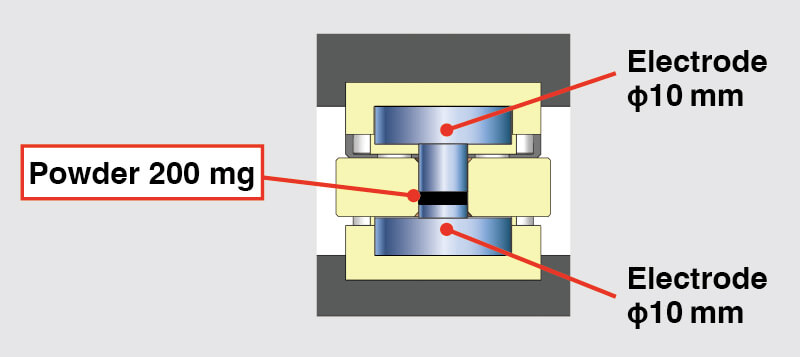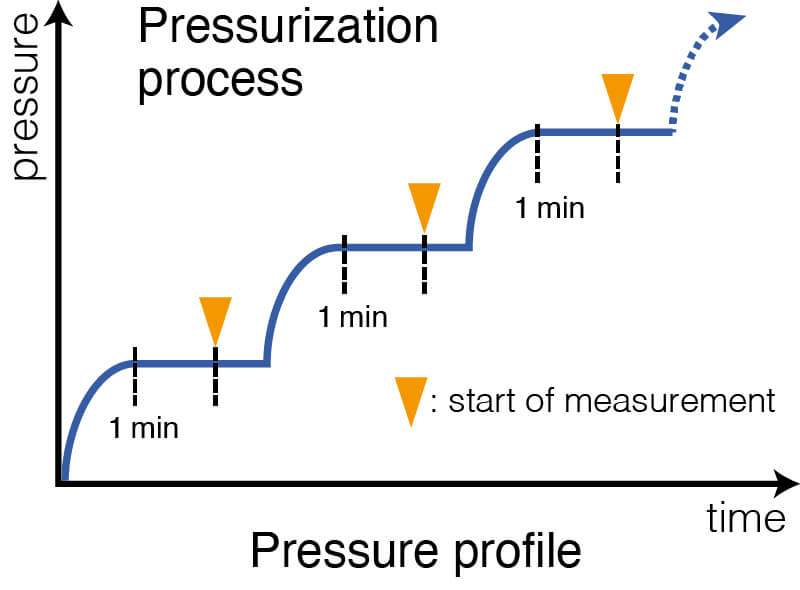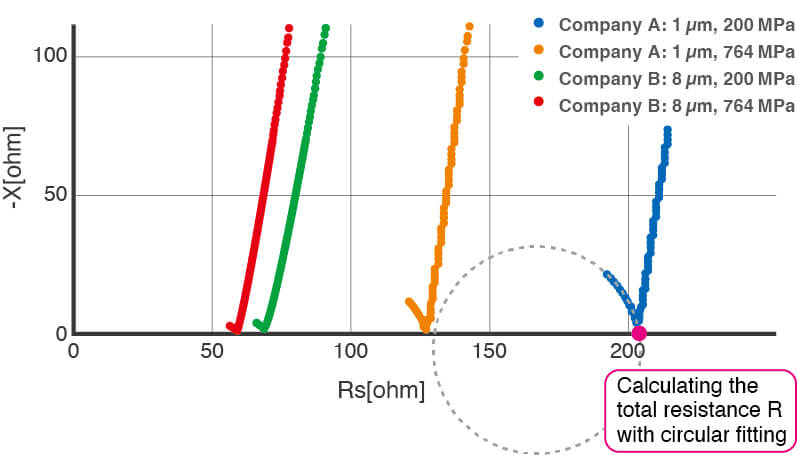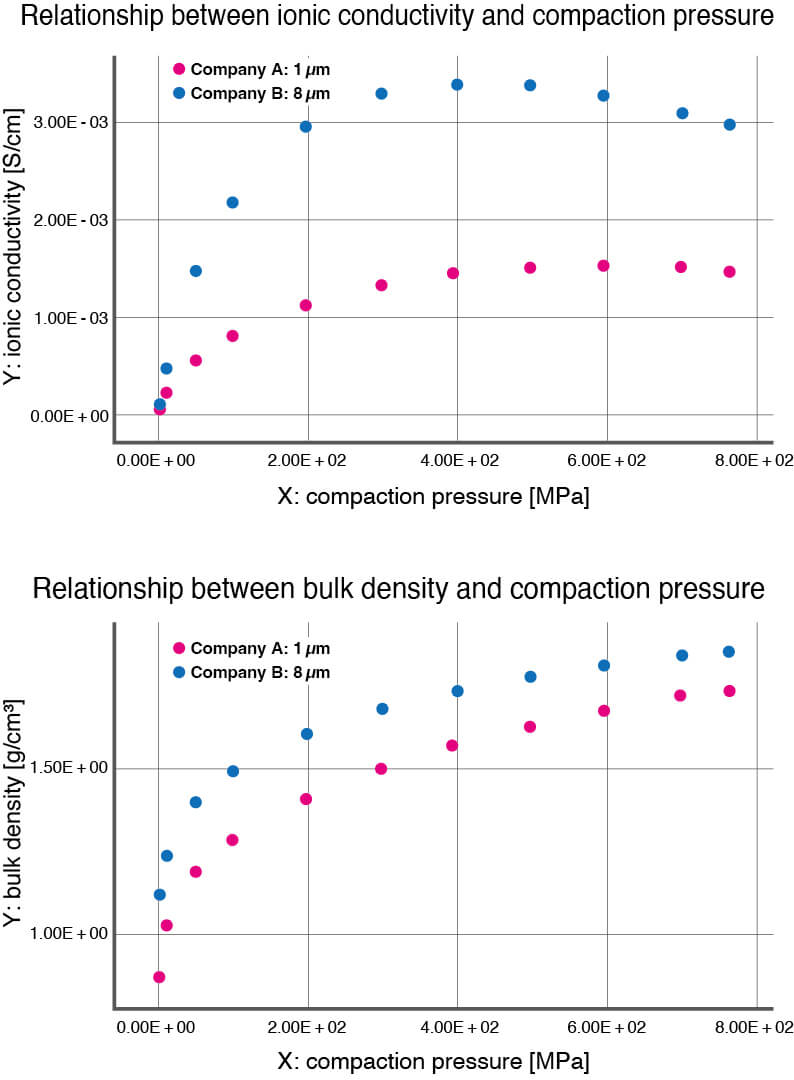Evaluating the relationship between mechanical properties and ionic conductivity of sulfide-based solid electrolytes
In recent years, researchers have focused on developing solid-state batteries in an effort to create highly safe and energy-dense next-generation batteries.
In this pursuit, sulfide-based solid electrolytes that exhibit high formability and high ionic conductivity have garnered much attention.
However, there is not much detailed knowledge about the compaction process and the pressure characteristics after the compaction.
This application note presents measurement examples that evaluate the relationship between the mechanical properties of solid electrolytes and their ionic conductivity (all measurements performed with Hioki's Powder Impedance Measurement System).
Measurement object
- Li6PS5Cl Argyrodite (Ag₈GeS₆)
- Sample by Company A
Particle size: 1 μm - Sample by Company B
Particle size: 8 μm

Measurement conditions
- Weight: 200 mg
- Pressure conditions*: 1–764 MPa (11 points at arbitrary intervals)
- Standby time: 60 s
- Measurement frequency: 4 Hz to 5 MHz
- Signal level: constant voltage (CV) 0.1 V
- Electrode diameter: φ10 mm
* Thickness measurements under pressure conditions of 127 MPa or less are out of assured specifications. Please consider them as reference values.

Measurement results
Nyquist plot comparison (zoomed in excerpt shown)

The intersection of the arc and the X-axis (total resistance R) in the Nyquist plot shows the difference between manufacturers (in particle sizes). The material made by Company B is observed to have lower overall resistance.
Simultaneous evaluation of ionic conductivity and consolidation characteristics
The graph below shows the overall resistance R obtained by Nyquist plots.

- The material manufactured by Company B has high ionic conductivity, and its ionic conductivity decreases in the region of high pressure.
- The material made by Company B has a high bulk density and therefore high consolidation. In this way, it is possible to evaluate materials with different particle sizes and compositions.
In this way, it is possible to evaluate materials with different particle sizes and compositions.
Conclusion
The measurements presented in this application note clearly show that there is a correlation between the mechanical properties of sulfide-based solid electrolytes and their ionic conductivity. Such analysis provides researchers with new insights and will allow further improvements in designs of next-generation solid-state batteries.
For information on Hioki's Powder Impedance Measurement System that was used for the experiments in this application note, please visit its product page.

